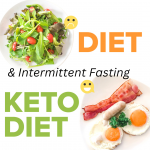The Secret Rhythm of Your Body: Unpacking Chrononutrition
Have you ever wondered why you’re starving in the morning, but come evening, you’re not that hungry? Or perhaps you’ve noticed how your body seems to crave different foods at different times of the day? Well, my friend, your body has a rhythm, and it’s about time we all started listening to it. Welcome to the world of Chrononutrition.
Meet the Maestro: Dr. Alain Delabos
In 1986, a man named Dr. Alain Delabos decided to march to the beat of a different drum. Noticing our rushed lifestyles and our tendency to eat whatever, whenever, he set out to create a way of eating that would sync with our biological clocks.
The guiding principle? Your body assimilates food differently depending on the time of day. What this means is that the same food could either be transformed into energy or stored as fat depending on when you eat it. Think of it as a magical food clock where the hands of time determine whether your cheeseburger is an energy-packed meal or a ticket to weight gain city.
The Heartbeat of Chrononutrition
So how does this magical food clock work? It’s simple. Your body secretes hormones approximately every 4 hours, with enzymes essential for nutrient absorption following a similar rhythm. Chrononutrition is all about providing your body with the nutrients it needs when it needs them, taking into account these hormonal and enzymatic rhythms.
To make this work, you’re required to have four meals, each about 4 hours apart. This isn’t just a random number; it’s the average time it takes for your body to digest a meal. Adhering to these intervals may help you avoid weight gain and those dreaded food comas.
Timing is Everything: A Day in the Life of Chrononutrition
Let’s break down what a typical day looks like on this diet:
- Breakfast: Your body is a morning person. It secretes insulin (storage hormone), lipases (fat digesting enzymes), and proteases (protein digesting enzymes). This calls for a breakfast rich in carbohydrates, proteins, and lipids. Think cheese, butter, cold cuts, starchy foods, and eggs. And the best part? No calorie counting at breakfast!
- Lunch: The theme for lunch is proteins and carbs. A single dish with a large portion of animal protein and starchy foods should suffice. This meal is designed to fuel you for the rest of the day.
- Snack: Ah, the afternoon slump. Chrononutrition has you covered with a sweet snack. This could be dried fruits or dark chocolate, enough to power you through to dinner.
- Dinner: As the day winds down, so do your digestive secretions. Dinner should be light, with options like white fish or lean meat and vegetables.
What’s more, Chrononutrition has a bonus level – two “joker” meals a week where you can eat what you want without worrying about quantities or calories.
Benefits and Drawbacks: The Highs and Lows of Chrononutrition
The beauty of Chrononutrition is that no food is off-limits. You just need to eat the right food at the right time. Plus, who doesn’t love the idea of not counting calories?
As for the concept of chrononutrition, it is a legitimate and growing field of study in nutrition science. Chrononutrition focuses on the timing of meals in relation to the body’s natural circadian rhythms. Research suggests that aligning meal times with your body’s internal clock may lead to various health benefits, including reduced risk of chronic diseases like diabetes and hypertension, improved sleep, better blood pressure and glycemic control, and potential weight loss. One key aspect of chrononutrition is avoiding late-night eating, as it’s linked to impaired metabolic function. However, it’s important to note that while meal timing matters, the quality of the food you eat is still very important for overall health2.
Please bear in mind that while chrononutrition offers potential benefits, it may not be suitable for everyone, and any dietary changes should be discussed with a healthcare provider to ensure they fit your individual needs and health circumstances. If you are thinking of changing your diet or lifestyle, you must first check with your primary care GP.











